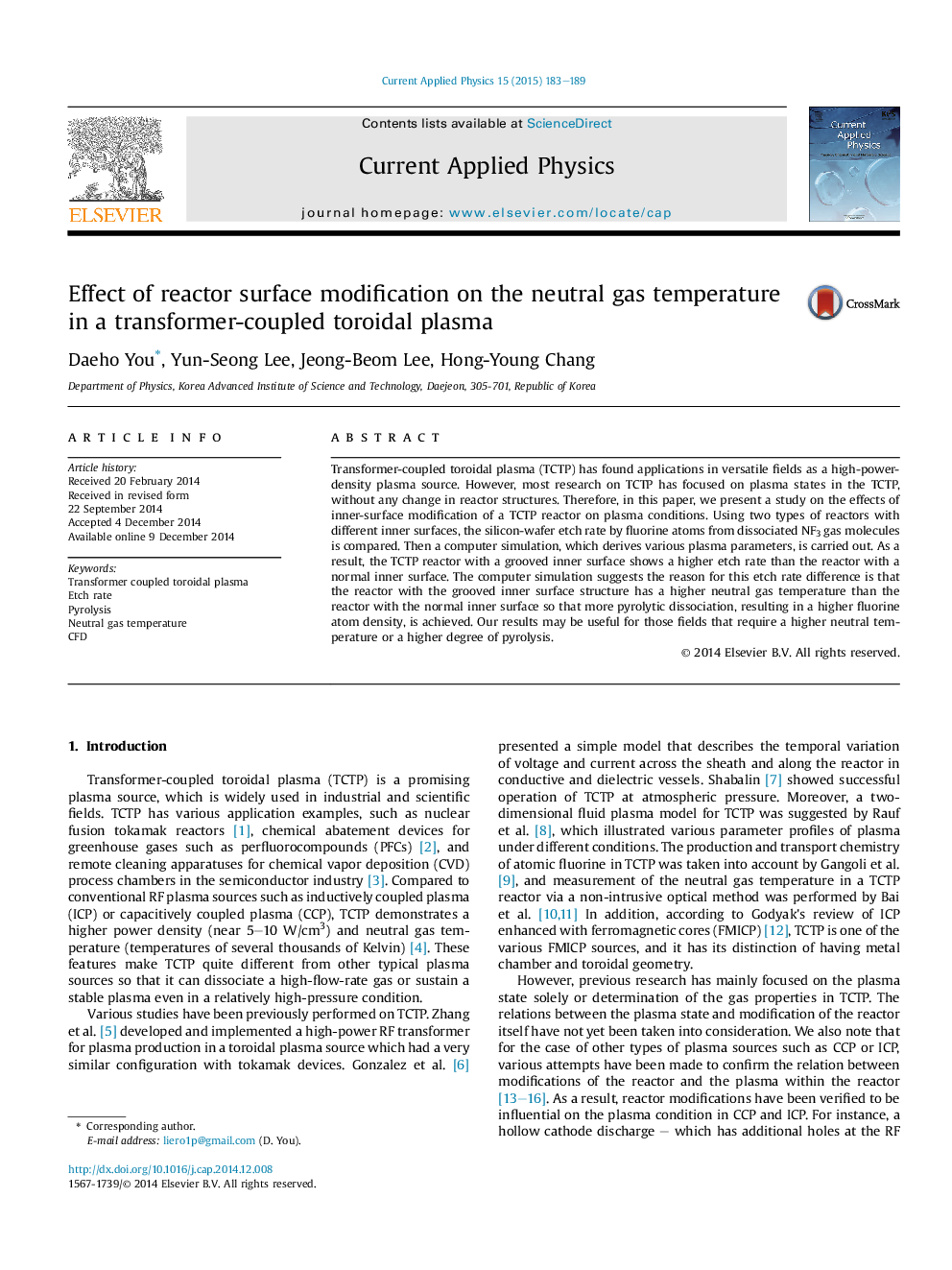| Article ID | Journal | Published Year | Pages | File Type |
|---|---|---|---|---|
| 1785675 | Current Applied Physics | 2015 | 7 Pages |
•We compared two different transformer-coupled toroidal plasma(TCTP) reactors.•The difference of two TCTP reactors was in inner-surface structures.•Fluorine(F) atoms produced from NF3 plasma in TCTP were used to etch a silicon wafer.•Grooved-surface reactor showed higher silicon etch-rate than normal-surface reactor.•Higher neutral gas temperature in the former reactor made more F atoms by pyrolysis.
Transformer-coupled toroidal plasma (TCTP) has found applications in versatile fields as a high-power-density plasma source. However, most research on TCTP has focused on plasma states in the TCTP, without any change in reactor structures. Therefore, in this paper, we present a study on the effects of inner-surface modification of a TCTP reactor on plasma conditions. Using two types of reactors with different inner surfaces, the silicon-wafer etch rate by fluorine atoms from dissociated NF3 gas molecules is compared. Then a computer simulation, which derives various plasma parameters, is carried out. As a result, the TCTP reactor with a grooved inner surface shows a higher etch rate than the reactor with a normal inner surface. The computer simulation suggests the reason for this etch rate difference is that the reactor with the grooved inner surface structure has a higher neutral gas temperature than the reactor with the normal inner surface so that more pyrolytic dissociation, resulting in a higher fluorine atom density, is achieved. Our results may be useful for those fields that require a higher neutral temperature or a higher degree of pyrolysis.
